Moose are some of the most awe-inspiring animals in North America. With their towering antlers and quiet strength, spotting one in the wild feels like seeing a piece of wilderness history. But these giants aren’t spread evenly across the country—some states are true moose territory, while others barely see a hoofprint. Understanding where they live can help with wildlife conservation and even guide your next outdoor adventure. A few states have taken special steps to protect their moose, leading to booming populations. In one place, their numbers are so high you might just catch one crossing the road on your way to work.
Alaska
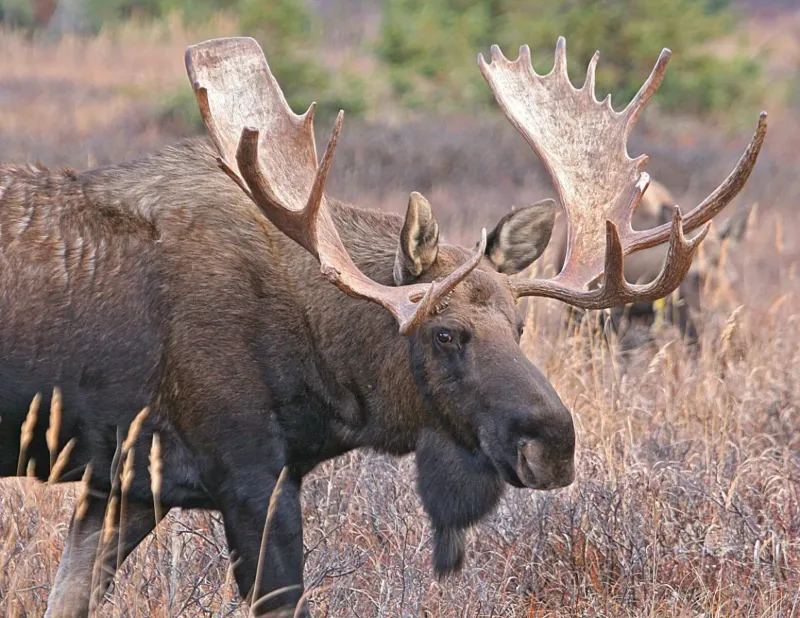
Alaska is home to the largest moose population in the United States, with over 70,000 individuals roaming its vast wilderness. The state’s expansive and diverse terrain provides an ideal habitat for these majestic creatures. Moose in Alaska can often be seen grazing in open fields or wandering through dense forests. The abundance of food and limited human interference make Alaska a haven for moose. Interestingly, the moose here are known for their impressive size and antler span. Their presence is a significant part of Alaskan wildlife, attracting wildlife enthusiasts and photographers alike.
Maine
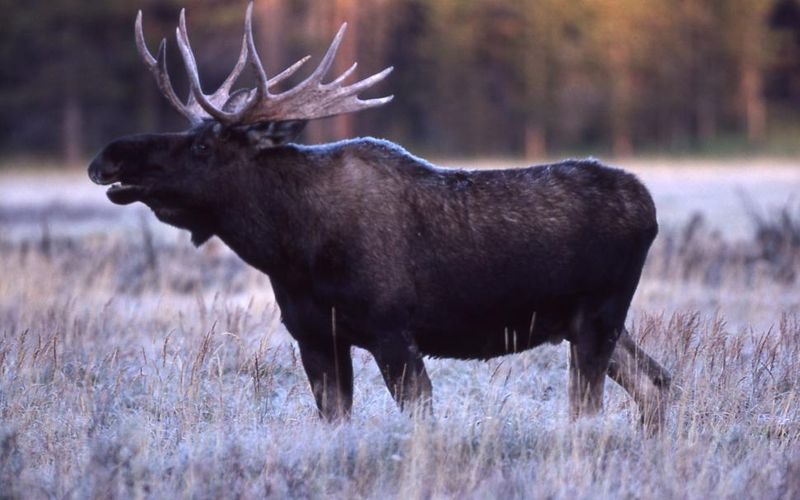
Maine boasts the second-largest moose population in the country, making it a prime spot for moose sightings. These creatures thrive in Maine’s thick forests and wetlands. Moose are frequently spotted near water bodies, providing picturesque views for locals and tourists. The state’s commitment to conservation efforts ensures that moose populations remain stable. In Maine, moose are emblematic of the state’s rich natural heritage. The vibrant autumn landscapes further enhance the moose-watching experience, drawing nature lovers from all over. Maine’s moose offer a glimpse into the wild, untamed beauty of the Northeast.
Minnesota

Minnesota’s moose population may not be as large as Alaska’s, but it remains a vital part of the state’s ecosystem. These creatures are often found in the northeastern part of the state, where the climate and terrain are most favorable. During winter, moose can be seen navigating through snowy landscapes, a sight both haunting and beautiful. Conservationists in Minnesota are actively working to preserve moose habitats and ensure their survival. The presence of moose in this state adds to the rich tapestry of Minnesota’s wildlife, attracting many visitors each year eager to catch a glimpse of these gentle giants.
Wyoming
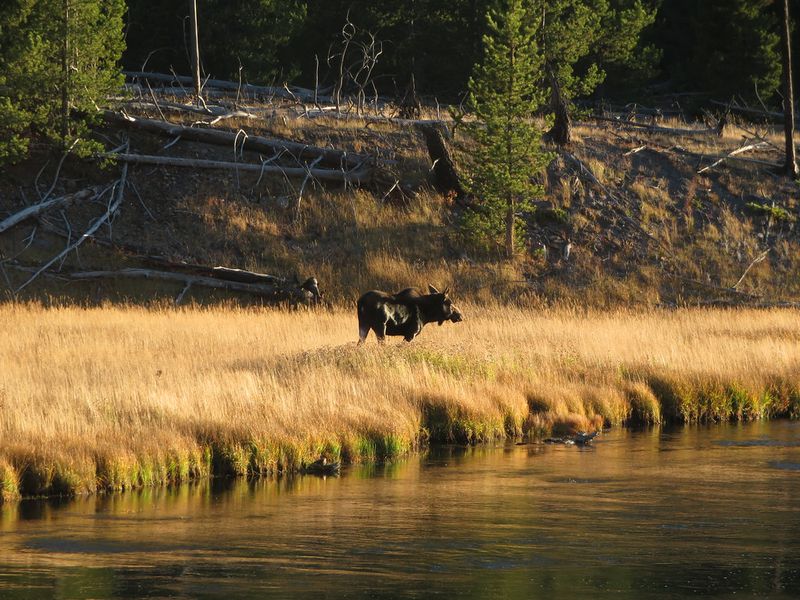
In Wyoming, moose are a common sight, especially in areas like the Grand Teton National Park. The state offers a diverse range of habitats, from lush grasslands to dense forests, supporting a healthy moose population. These majestic animals are often seen grazing peacefully, undisturbed by the presence of humans. Wyoming’s expansive wilderness provides plenty of space for moose to roam freely. The state’s commitment to wildlife conservation ensures that moose continue to thrive here. For those seeking to experience the rugged beauty of Wyoming, encountering a moose is an unforgettable experience, highlighting the state’s pristine natural environment.
Montana
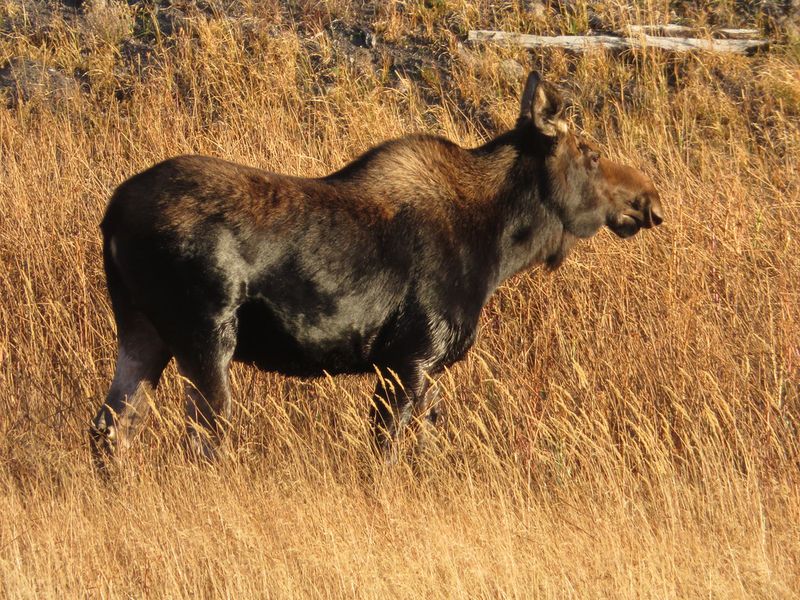
Montana’s vast and varied landscapes provide an ideal habitat for moose. With its sprawling forests and open plains, the state supports a healthy moose population. These creatures are often spotted in the western part of Montana, where the terrain is most suitable for their needs. The state’s dedication to preserving natural habitats plays a crucial role in maintaining the moose population. In Montana, moose are more than just wildlife; they are symbols of the wild, rugged beauty that defines the state. Their presence in the state’s natural scenery is a testament to Montana’s rich biodiversity.
Idaho
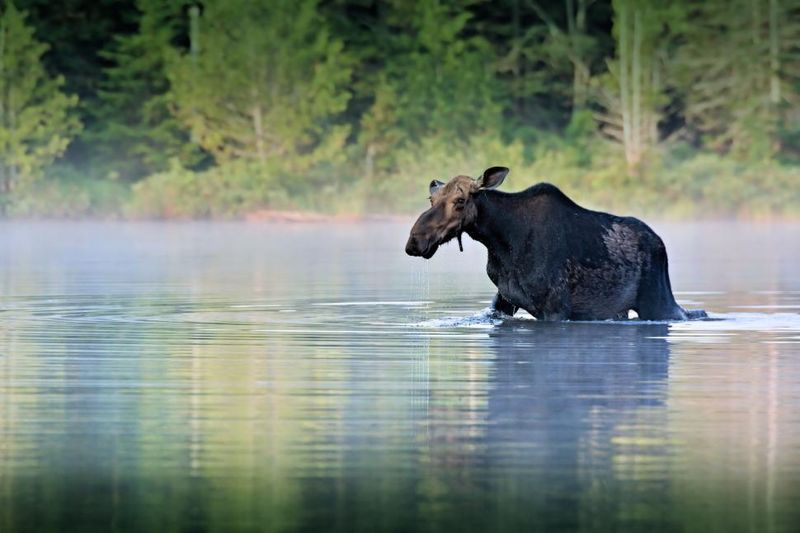
Idaho is another state where moose populations thrive, particularly in the northern regions. The abundance of rivers and forests provides an ideal setting for these creatures to flourish. Moose are often seen near water sources, where they can easily access food and shelter. Idaho’s commitment to wildlife conservation helps protect these magnificent animals and their habitats. Moose in Idaho are a common sight, captivating both residents and visitors with their majestic presence. The state’s diverse landscapes are a perfect backdrop for moose sightings, with the serene environment amplifying the experience of encountering these gentle giants.
Washington
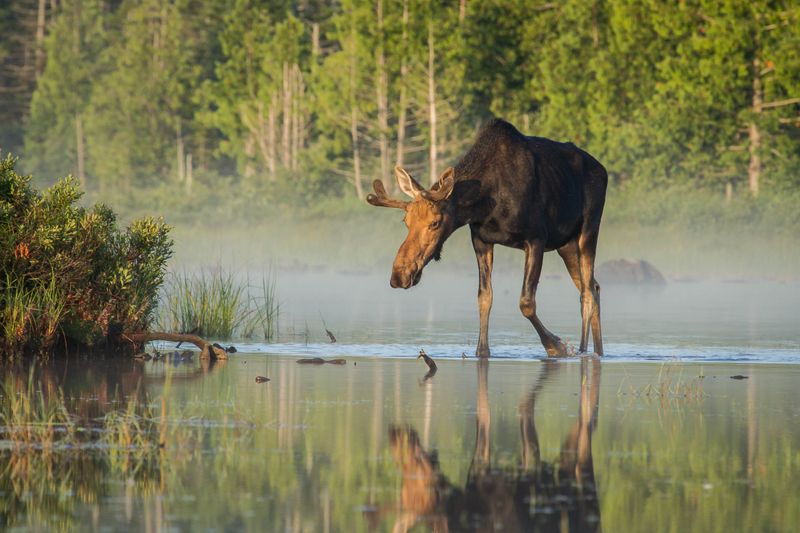
Washington state offers a suitable environment for moose, especially in the northeastern regions. The abundant forests and mild climate create a habitat where moose can thrive. Moose in Washington are often spotted in areas away from urban centers, enjoying the tranquility of the wilderness. The state’s efforts in conservation and habitat preservation are vital for sustaining moose populations. In Washington, moose are part of the rich tapestry of wildlife, contributing to the state’s natural beauty. The serene and misty landscapes of Washington provide an enchanting setting for moose to roam, offering a glimpse into the state’s wild heart.
Colorado

Colorado’s mountainous regions are home to a thriving moose population, particularly in the Rocky Mountain National Park. These creatures are well-adapted to the high-altitude environments where they find ample food and shelter. Moose in Colorado are often seen against the dramatic backdrop of snow-capped peaks, creating a striking visual contrast. The state’s commitment to wildlife preservation ensures that moose continue to thrive in these pristine habitats. In Colorado, moose are not only a part of the natural landscape but also a symbol of the state’s commitment to preserving its wild places. Their presence enriches Colorado’s diverse ecosystem.
Vermont
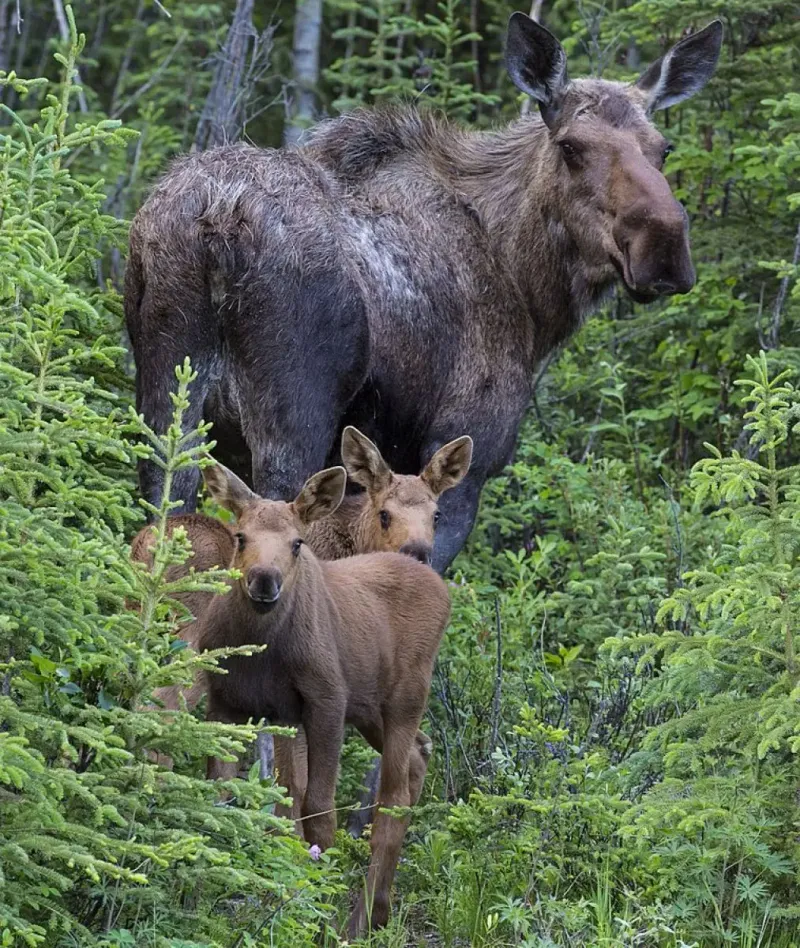
Vermont’s lush forests and gentle hills provide a perfect environment for moose. These creatures are often seen in the early morning, moving through the misty landscape with a quiet grace. Moose sightings are a common delight for residents and tourists alike, offering a glimpse into Vermont’s tranquil natural world. The state’s dedication to conservation helps maintain the moose population, ensuring future generations can enjoy these magnificent animals. In Vermont, moose are more than just a wildlife attraction; they are a testament to the state’s commitment to preserving its natural beauty. Their presence is a cherished part of Vermont’s rural charm.
New Hampshire
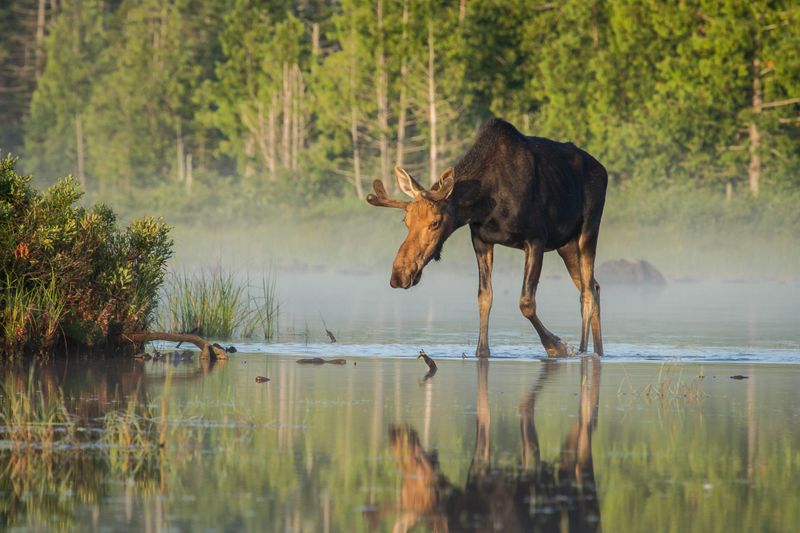
New Hampshire is home to a significant moose population, found predominantly in the northern regions. The state’s White Mountains offer an ideal habitat, with their dense forests and varied terrain. Moose in New Hampshire are often seen amidst the vibrant fall foliage, creating a breathtaking sight. The state’s efforts in wildlife conservation play a crucial role in sustaining moose numbers. In New Hampshire, moose are a symbol of the wild, untamed nature that characterizes the region. Their presence in the state’s forests adds to the allure of New Hampshire’s natural landscapes, captivating all who visit.
Wisconsin
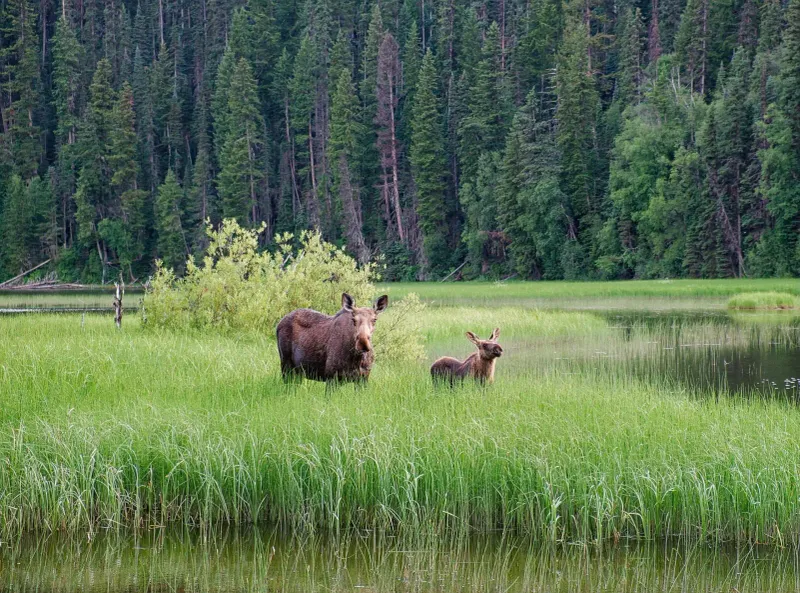
Wisconsin’s northern forests provide a suitable habitat for moose, although their population is smaller compared to other states. These majestic animals are often found near water bodies, taking advantage of the state’s abundant natural resources. Moose sightings, though rare, are a special treat for wildlife enthusiasts. Wisconsin’s commitment to preserving natural habitats aids in the conservation of moose populations. In Wisconsin, moose are part of the state’s diverse wildlife, contributing to its ecological richness. The serene landscapes of Wisconsin provide a peaceful setting for moose, adding to the state’s natural charm and beauty.
Michigan
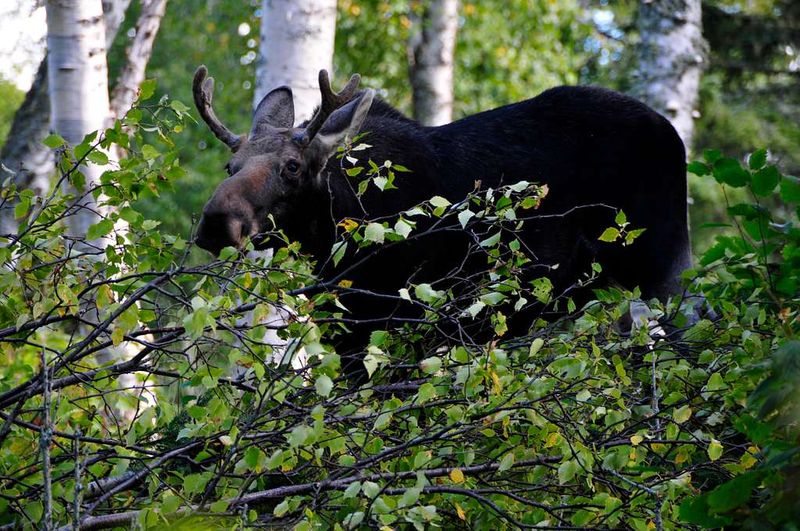
In Michigan, the Upper Peninsula is where most moose sightings occur. The dense mixed forests and numerous waterways create an environment conducive to a healthy moose population. These creatures are a treasured part of the state’s wildlife heritage, often seen by locals and tourists exploring the northern regions. Michigan’s conservation efforts focus on maintaining the natural balance of these ecosystems, ensuring moose can thrive. In Michigan, moose add to the state’s wild allure, becoming an integral part of the natural scenery. Their presence in the Upper Peninsula is a testament to Michigan’s rich and diverse wildlife.
Massachusetts

Moose sightings in Massachusetts are a thrilling surprise, as they are less common but increasingly frequent. The state’s western and central regions provide suitable habitats, with dense forests offering shelter and food. During winter, moose can sometimes be seen against the stark, snowy backdrop of Massachusetts’ landscapes. Conservation efforts in the state aim to support moose populations by protecting their natural habitats. In Massachusetts, the presence of moose adds a touch of wilderness to the state’s rich natural tapestry, intriguing residents and visitors alike. Their appearance in the state’s forests is a reminder of the enduring wildness of the region.
Utah
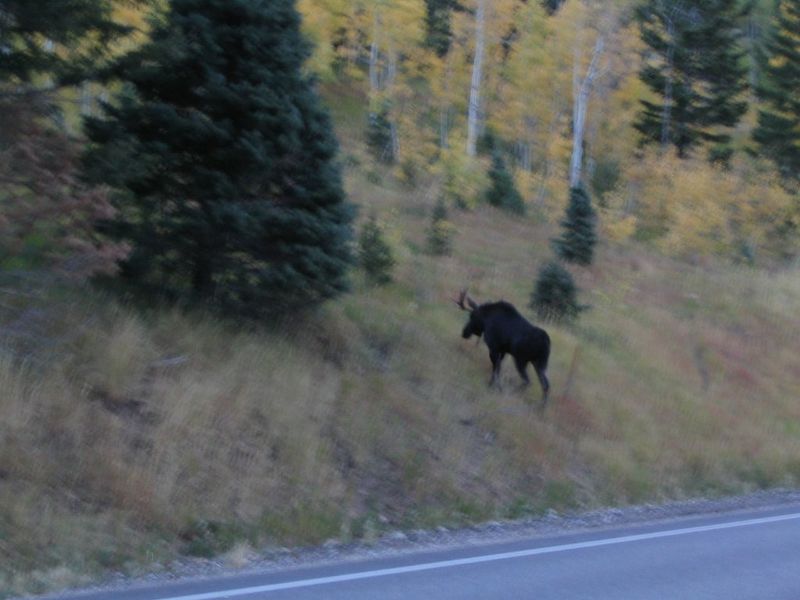
Utah’s mountainous regions, particularly the northern areas, provide a habitat where moose can thrive. The state’s diverse landscapes, from alpine forests to serene lakes, offer ample resources for these animals. Moose sightings in Utah are more common in areas away from urban centers, where they can roam freely. The state’s conservation initiatives are crucial in maintaining moose populations and their natural habitats. In Utah, moose are a part of the scenic beauty that defines the state, enhancing the natural experience for all who encounter them. Their presence in Utah’s wilderness is a testament to the state’s ecological diversity.
North Dakota
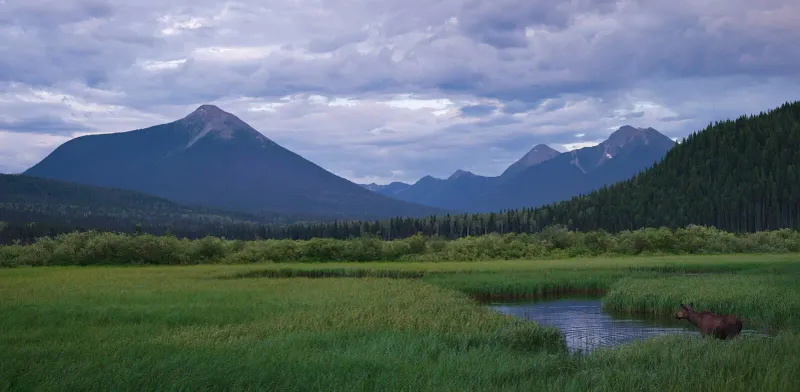
Moose in North Dakota are a fascinating sight, often seen wandering through the state’s expansive prairies and forested areas. The state’s varied landscapes provide a unique habitat for these creatures, with food and shelter available in abundance. North Dakota’s conservation efforts focus on preserving these natural habitats, ensuring moose populations remain stable. Moose in North Dakota are emblematic of the state’s wild beauty, adding to the rich biodiversity that characterizes the region. Their presence in the state’s wide-open spaces offers a rare glimpse into the untamed wilderness of North Dakota, captivating the imagination of all who observe them.
Connecticut

Moose in Connecticut are a rare but exciting find, primarily seen in the northern and western parts of the state. The dense forests and peaceful surroundings provide an ideal setting for these creatures. Moose sightings in Connecticut are treasured moments for wildlife enthusiasts, adding a touch of wild mystery to the state’s natural landscapes. Conservation efforts aim to protect and sustain moose habitats, ensuring these majestic animals continue to grace the state with their presence. In Connecticut, moose serve as a reminder of the wild corners that still exist, offering a serene glimpse into the natural world.

